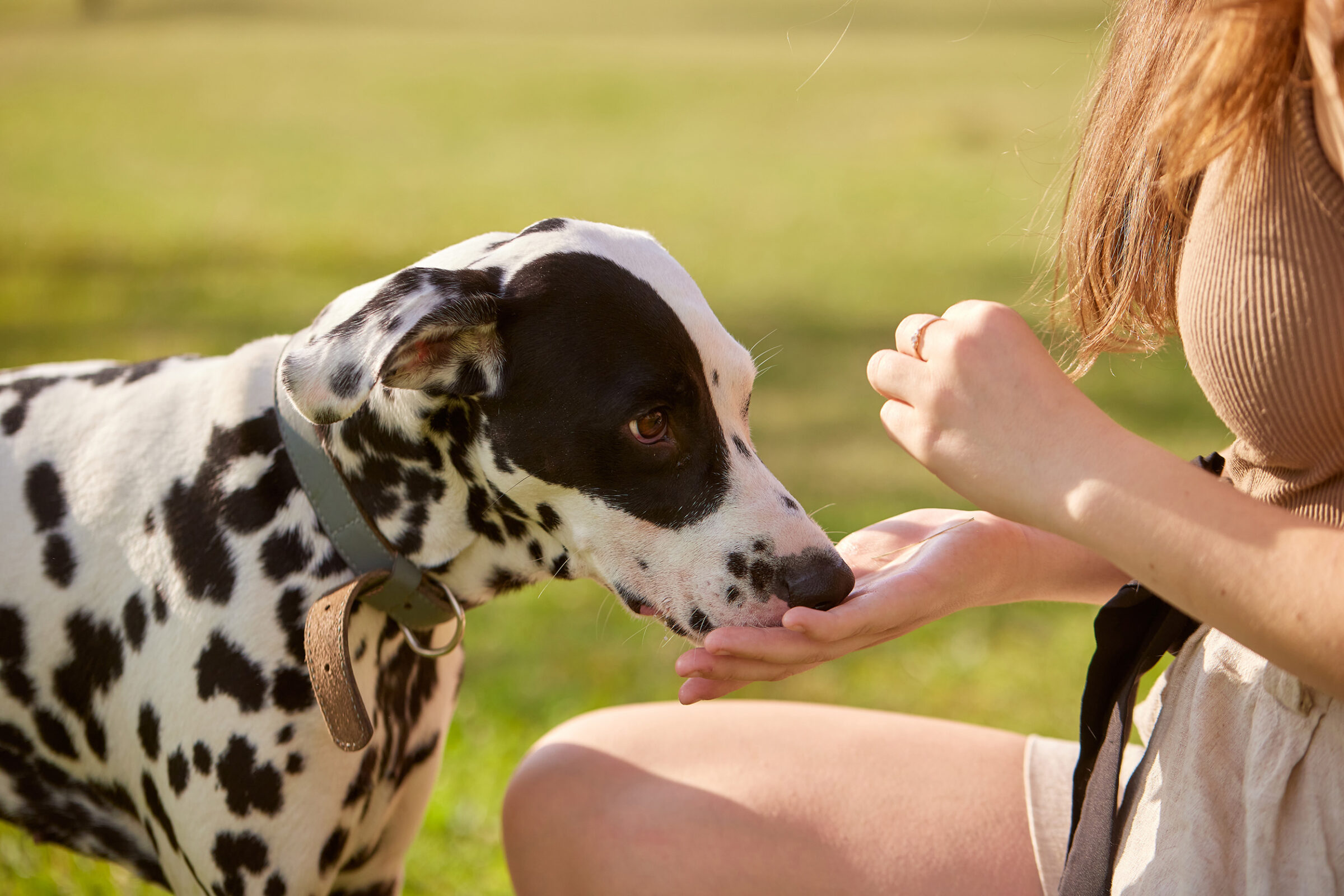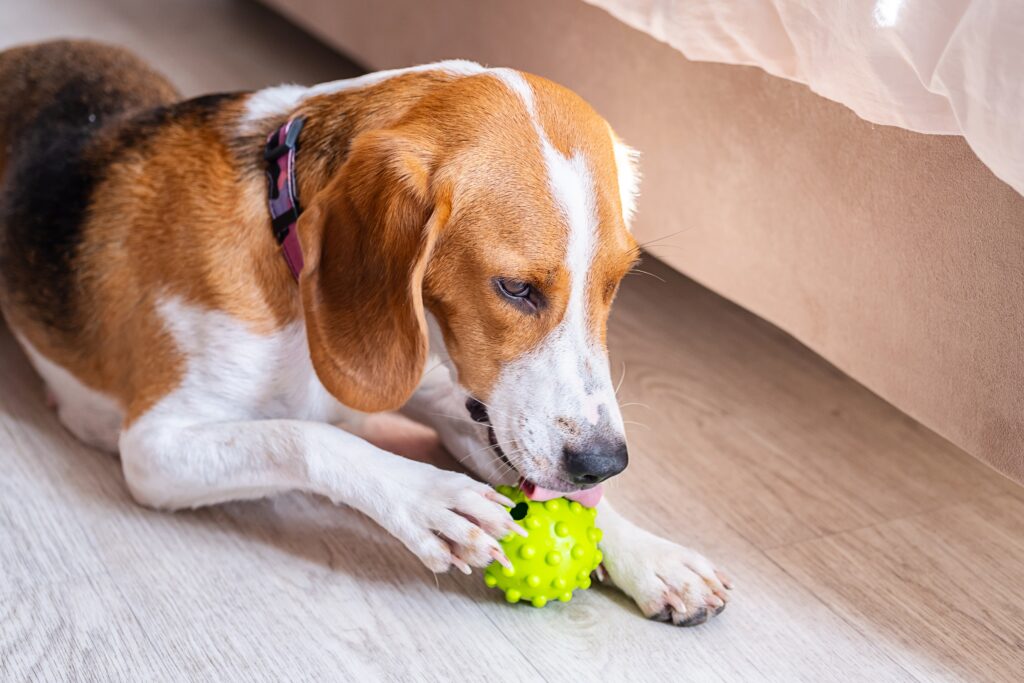Is My Dog Resource Guarding? A Guide to Understanding and Training this Behavior
The scene is a familiar one: your dog is happily chewing on a bone, but the moment you walk into the room, their posture stiffens. A low growl rumbles from their chest as they turn their body to shield the bone. You might wonder, “Why is my dog acting this way?” or “Is my dog aggressive?”
This behavior is known as dog resource guarding, and while it can be alarming, it’s a natural, instinctual behavior that can be managed and improved with the right training. Resource guarding is not a sign of a “bad” dog, but rather a dog’s attempt to communicate that they feel a threat to a valuable item. This guide will help you understand why your dog exhibits this behavior, how to recognize the signs, and, most importantly, how to train it safely and effectively.
What Exactly Is Dog Resource Guarding?
Dog resource guarding is the act of a dog displaying behaviors (like growling, snapping, or baring teeth) to prevent others from taking or approaching a valued item. The “resource” can be anything from food, toys, bones, or even a person, a bed, or a favorite spot on the couch.
It’s a form of communication rooted in instinct, a leftover trait from a time when dogs had to protect food and territory to survive. The behavior exists on a spectrum, from subtle signs to overt aggression. The key is to understand that your dog isn’t doing this to be “dominant” or “stubborn”; they are doing it because they genuinely feel a need to protect something they perceive as theirs.
Why Does My Dog Resource Guard? (Common Causes & Triggers)
Understanding the “why” behind dog resource guarding is crucial to addressing the behavior. The cause is almost always rooted in fear, not malicious intent.
- Fear of Loss: At its core, resource guarding is a fear-based behavior. Your dog is afraid that the resource will be taken away permanently. This could stem from a past experience of having an item taken without a fair trade, or simply a lack of trust.
- Survival Instincts: In the wild, animals must protect their food to survive. While your dog has a secure home, this primal instinct can still surface, especially around high-value items like a chew bone or a favorite toy. This behavior can be seen in any breed, which is why a foundational approach to training a golden retriever is just as important as knowing how to train a pit bull puppy.
- A History of Deprivation: Many dogs who were once strays or came from hoarding situations may develop resource guarding. This is a common issue when bringing home a rescue dog, as they often had to compete for food and resources, so they learned to guard them fiercely.
- Lack of Clear Communication: A dog may not have been taught that a person’s approach to their food bowl doesn’t mean it’s going to be taken. If a person just takes a bowl away without a clear signal, the dog might learn to anticipate that and respond defensively.
Is My Dog’s Behavior Resource Guarding? (Signs to Look For)
Dog resource guarding can range from subtle to severe. Learning to recognize the early warning signs is key to preventing the behavior from escalating.
- Subtle Signs: These are often the first indications. Your dog might stiffen their body, freeze in place, or eat faster when you approach. They might also stand over the item or move it away from you to a different location.
- Escalated Signs: If the subtle signs are ignored, the behavior can progress. These include a low, guttural growl, a snarl, or baring of the teeth.
- Overt Aggression: In the most severe cases, a dog will snap or bite to defend the resource. If your dog has displayed this level of aggression, it is crucial to seek professional help immediately to ensure the safety of everyone in the household.
How to Stop Your Dog’s Resource Guarding

Addressing resource guarding requires patience, consistency, and a commitment to building trust with your dog. It’s important to use positive, force-free methods.
Management: Preventing the Behavior
The first step is to manage the environment to prevent your dog from practicing the behavior. This means avoiding triggers.
- Feed in a Quiet Space: Feed your dog in a separate room or behind a closed door to prevent others from approaching them while they eat.
- Put Away High-Value Items: Don’t leave high-value items like bones, chew sticks, or certain toys lying around. Only bring them out when you can supervise and work on training.
- No “Free” Items: Avoid leaving food or treats in places where your dog could feel a need to guard them.
Building Trust with Your Dog
Your dog needs to learn that your presence near their things is a good thing. The goal is to change their mindset from “They’re going to take my food” to “They’re going to give me something even better!”
- The “Give and Get” Method: While your dog is eating or chewing, walk by at a safe distance and drop a high-value treat, like a piece of chicken or cheese, into their bowl or onto the floor near them. This teaches them that your approach means they’re gaining a resource, not losing one.
- The “Trading Game”: This is a key training exercise. Start by offering your dog a high-value treat in exchange for a low-value item they are holding, like a small toy. Say a cue like “trade” as you offer the treat. Once they drop the item to take the treat, praise them and let them have the new reward. Slowly work up to trading for higher-value items.
When to Seek Professional Dog Trainers for Resource Guarding
While these training methods are effective, dog resource guarding can be a dangerous behavior, especially if it involves a child or a dog with a history of biting. If you have any doubt about your ability to manage the behavior safely, or if your dog is showing signs of aggression, it is essential to seek the help of dog trainers for resource guarding. A professional can accurately assess your dog’s behavior and create a personalized training plan that is both safe and effective. They can help you implement the training methods correctly and guide you through the process, giving you confidence and peace of mind.
See How BlackPaw Dog Training Can Help You Today
Resource guarding can be a stressful and isolating problem for any dog owner. At BlackPaw Dog Training, we understand these challenges and are committed to helping you build a trusting, respectful relationship with your dog. Our compassionate, science-based approach is designed to address the root cause of the behavior and provide you with the tools you need to succeed.
If you’re ready to stop the struggle with dog resource guarding and build a safer, happier life with your best friend, we can help. Explore our dog training programs to find a solution that works for you, or contact us today to schedule a consultation.

